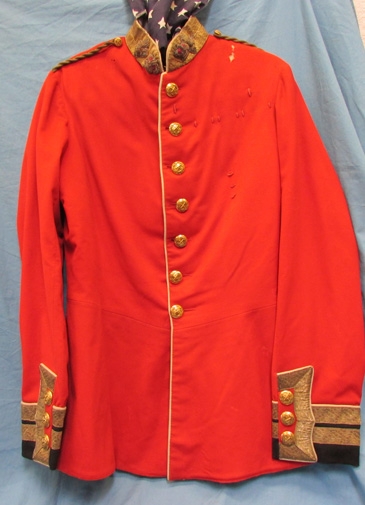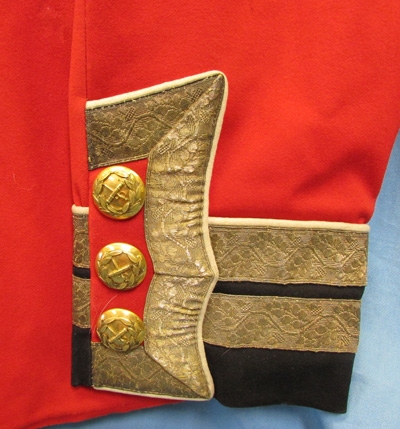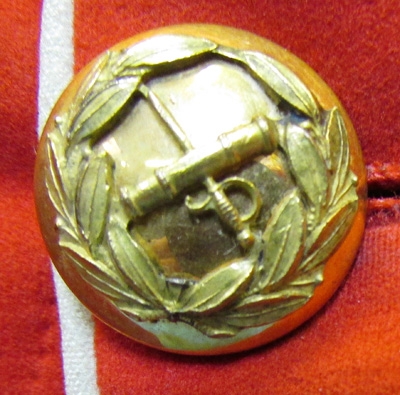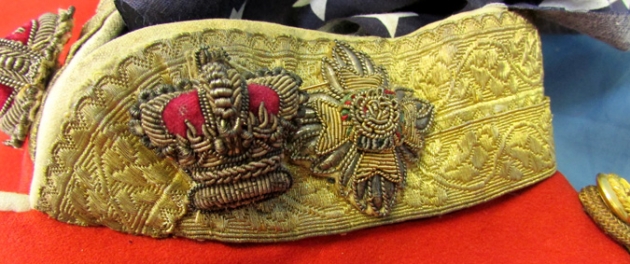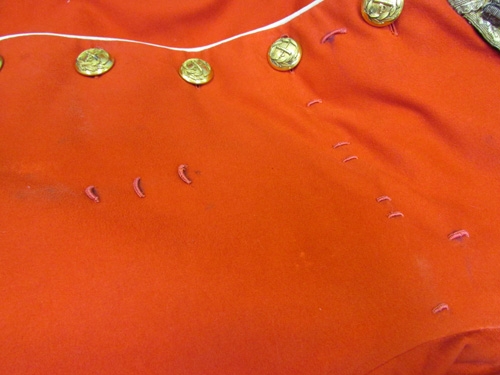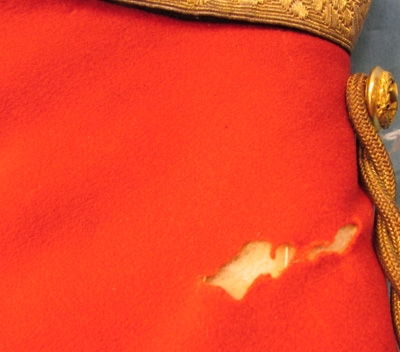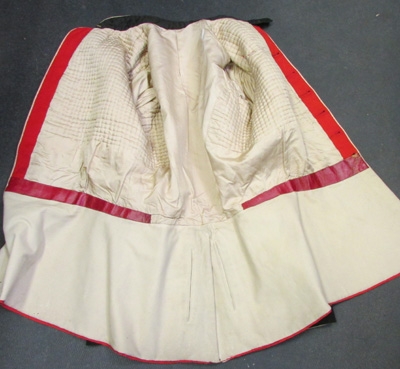British 19th Century, Full General Rank Tunic, Pattern 1856-1868
This item is listed for historical interest only. It was listed on our site previously but has
been sold and is no longer available for purchase.
Sold for: $795.00
British 19th Century, Full General Rank Tunic, Pattern 1856-1868
This item is listed for historical interest only. It was listed on our site previously but has
been sold and is no longer available for purchase.
Sold for: $795.00
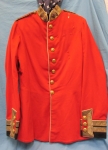 Original era manufacture. A beautiful old tunic of vibrant scarlet wool material, single breasted, with black wool cuffs and collar. General officer patternbrocade on the cuffs, collar and rear skirt, with 21 General Officer, crossed sword & batonpattern, large size buttons,and two smaller shoulder strap buttons.On the left breast of the tunic, are loops for a six inch ribbon bar, and below that additional multiple support loops for aseven inch medal bar, and below three loops for a breast badge.The body of the tunic is lined in a quilted pattern of white silk, with the tails lined in white wool with two pockets. A thin red Moroccan leather waistband is in place. On each side of the collar are thickly embroidered star and crown, designating the rank of a full General. On the shoulders are two narrow, twisted gold wire cords secured by two small General's pattern buttons. The beautifully made gilt finished buttons display the backmark of Jennens & Co. London, without the Prince of Wales Plume added in1860 by that firm. I was able to check the backs of the closure buttons,they all match, however the cuff and skirt buttons are sewn so closely to the material I can't get a good view of the reverse. Their obverse is identical, so they are likely the same manufacture. There is some scattered mothing, most of it rather minor, with the largest and most unsightly being just above the ribbon bar loops.Some of the cuff and collar brocade is coming loose, andseveral of the collar ornaments are a little loose as well.Overall the tunic is very presentable, and represents an era of wear from the late Crimean period, through the time of the Indian Mutiny and into the early years of the Zulu campaigns. I would thinkwith a little effort the identity of the original owner could be narrowed down a bit, not too many full General rank officers in those days.
Original era manufacture. A beautiful old tunic of vibrant scarlet wool material, single breasted, with black wool cuffs and collar. General officer patternbrocade on the cuffs, collar and rear skirt, with 21 General Officer, crossed sword & batonpattern, large size buttons,and two smaller shoulder strap buttons.On the left breast of the tunic, are loops for a six inch ribbon bar, and below that additional multiple support loops for aseven inch medal bar, and below three loops for a breast badge.The body of the tunic is lined in a quilted pattern of white silk, with the tails lined in white wool with two pockets. A thin red Moroccan leather waistband is in place. On each side of the collar are thickly embroidered star and crown, designating the rank of a full General. On the shoulders are two narrow, twisted gold wire cords secured by two small General's pattern buttons. The beautifully made gilt finished buttons display the backmark of Jennens & Co. London, without the Prince of Wales Plume added in1860 by that firm. I was able to check the backs of the closure buttons,they all match, however the cuff and skirt buttons are sewn so closely to the material I can't get a good view of the reverse. Their obverse is identical, so they are likely the same manufacture. There is some scattered mothing, most of it rather minor, with the largest and most unsightly being just above the ribbon bar loops.Some of the cuff and collar brocade is coming loose, andseveral of the collar ornaments are a little loose as well.Overall the tunic is very presentable, and represents an era of wear from the late Crimean period, through the time of the Indian Mutiny and into the early years of the Zulu campaigns. I would thinkwith a little effort the identity of the original owner could be narrowed down a bit, not too many full General rank officers in those days.
Photos of British 19th Century, Full General Rank Tunic, Pattern 1856-1868
